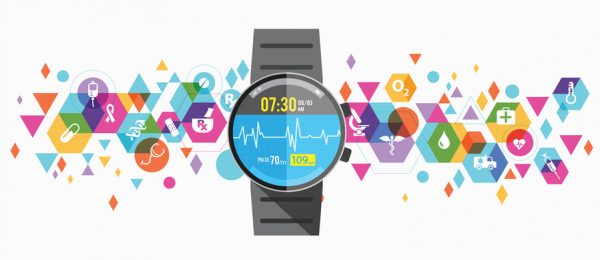
A new TV show, The Pitt, is winning rave reviews from healthcare workers for accurately depicting the crisis facing emergency rooms. With a packed waiting room of desperate people, the limited staff of a fictional hospital do all they can to triage patients and provide the care they need. It “has taken medical professionals by surprise with its accuracy,” the Daily Mail reported.
Across the country, “ER patients who need to be hospitalized find themselves stuck in hallways or waiting rooms, sometimes for days or weeks, before they are able to get further care,” NBC reported last year. Tackling this problem requires action on multiple fronts. As Benjamin Barlow wrote for Medcity, part of the solution is to strengthen urgent care centers.
There’s another solution that can be transformative: tapping into the potential of new technologies. Across the country, the healthcare industry must leverage digital health tools that let patients keep their health monitored wherever they are. These tools can detect symptoms and diseases early on as well.
My work focuses on developing remote technologies and from this vantage point, I see how remote patient monitoring (RPM) offers unprecedented opportunities, though it also has limits. As I tell my staff, “We can do all sorts of things; we should do the things that matter.”
Well-designed technology can empower people to gather healthcare data at home that was previously available only in hospitals or some medical centers. A growing array of RPM devices can conduct blood tests; calculate blood pressure; take clinically validated ECGs (electrocardiograms), and more. This information can be transmitted instantly to healthcare providers.
An estimated 80% of cardiovascular disease is preventable. Data shows that these technologies can detect conditions early, accelerate care and help avoid trips to the emergency room. They improve outcomes and save lives in the battle against heart disease, the leading cause of death. They also relieve costs on the healthcare system.
In a study for the Journal of Medical Internet Research, doctors David Whitehead and Jared Conley — both with the emergency department at Massachusetts General Hospital in Boston — argued that it’s time for RPM to expand. “Its use remains more limited within the hospital at home (HaH) model of care despite a significant opportunity to increase patient eligibility, improve safety, and decrease costs,” they wrote. “HaH could achieve these goals by further adopting the 3 primary modalities of RPM (ie, vital sign, continuous single-lead electrocardiogram, and fall monitoring).”
First level of care
The obvious concern is that no one should be encouraged to stay home and avoid seeking help if they are in imminent danger. So successful RPM tools must be built to provide a first level of support, giving people trustworthy information about the state of their health.
Rigorous testing of all RPM technologies is crucial. Once a tool meets a high enough threshold to win FDA approval, patients must be trained in how to use them. These tools should be user friendly, and the data they collect should integrate seamlessly for physicians to assess and diagnose correctly.
The information these tools collect can be analyzed instantly by AI-powered technologies. The results can then inform the patient whether the findings are typical, in which case there’s often no cause for alarm, or whether they indicate a possible problem. In an era in which healthcare providers are inundated with data, getting these findings directly to patients, with actionable insights, can change the paradigm.
RPM technologies should also include the ability to connect a patient remotely to a healthcare professional who can discuss their findings and symptoms if necessary. Through this process, if a patient is concerned, they can get help in deciding whether to schedule an appointment with their doctor or rush to an emergency room.
The accessibility challenge
Making this work means getting RPM technologies into the hands of more people. There’s a long way to go. Even when it comes to health apps that track symptoms, medications, or nutrition, the United States currently has about 43% of the population using these, compared to 70% in India.
People at lower socio-economic levels are less likely to have these tools. They’re also more likely to go to emergency rooms for visits that are preventable. The same goes for people in rural areas. So moving forward, it’s essential for the health tech and medical fields to work together to make remote patient monitoring much more widely available and affordable for everyone across the country, with and without insurance.
The goal is to harness the potential of new technologies to help people get the information they need anytime, anywhere. This kind of democratization will go a long way toward tackling the crisis for emergency rooms, and building a healthier society
Photo: exdez, Getty Images
Al Woo is chief product officer at AliveCor, the leading provider of FDA-cleared personal electrocardiogram (ECG) technology. Alivecor is transforming cardiology with its medical-grade AI-powered solutions. Al and his team manage a portfolio of innovative devices and services for consumer and clinical markets. These include Kardia devices, the most clinically validated personal ECGs. The latest is the Kardia 12L ECG System which detects 35 cardiac conditions including heart attack, and was designed exclusively for use by healthcare providers.
AliveCor's enterprise platform allows third-party providers to manage their patients’ and customers’ heart conditions simply using state-of-the-art tools, addressing gaps in care and improving the treatment experience for patients across a range of disease areas. Before joining AliveCor, Al was principal product manager with Alexa Voice Service at Amazon and director of product marketing at Synaptics. He received his engineering degree from the Massachusetts Institute of Technology.
This post appears through the MedCity Influencers program. Anyone can publish their perspective on business and innovation in healthcare on MedCity News through MedCity Influencers. Click here to find out how.











